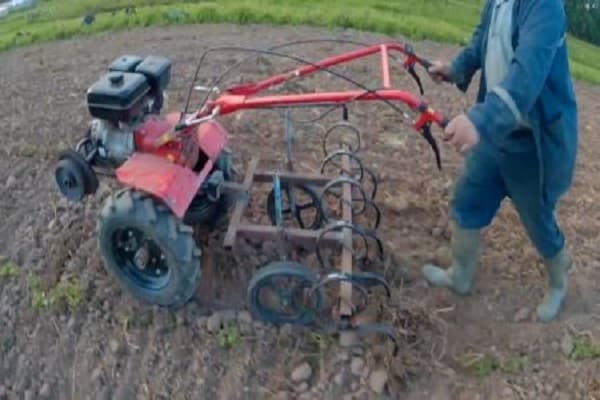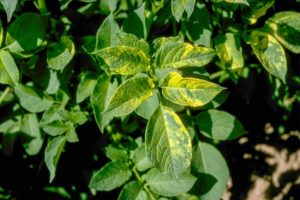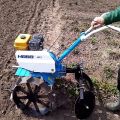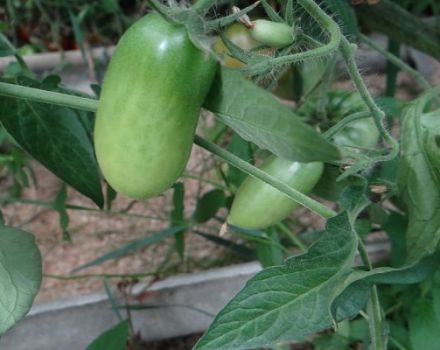Types of cultivators for inter-row tillage and how to make them yourself
The advent of cultivators for inter-row soil cultivation is a real breakthrough in agriculture. They greatly facilitate and speed up the process of loosening the soil, weeding, and feeding. 15–20 days after planting the potatoes, the planted area requires oxygen and moisture. To provide the soil with these components, land cultivation is carried out.
Potato cultivators
There are many varieties of cultivators. They are divided into claw and milling, single-row and multi-row. Available for manual and tractor use. To make it easier to make a choice, consider the characteristics of popular cultivators that are used to care for potatoes.
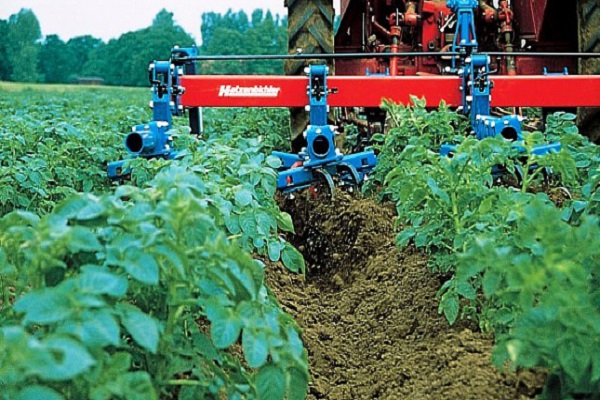
Milling cultivator KF-2.8
A native of the Belarusian Tekhmash plant. It is used simultaneously for inter-row processing and fertilization of 4 rows of vegetables. The working width is 2.8 m, the loosening depth is from 2 to 12 cm.
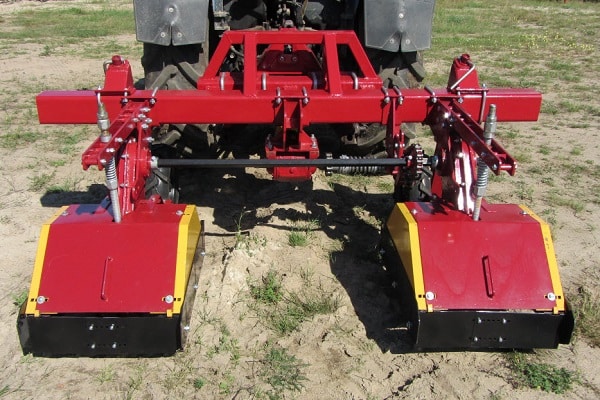
Milling cultivator KF-3.6
A graduate of the same Techmash. It is used simultaneously for inter-row soil cultivation and fertilization of 6 rows of vegetables. Working width 3.6 m, loosening depth from 2 to 12 cm.
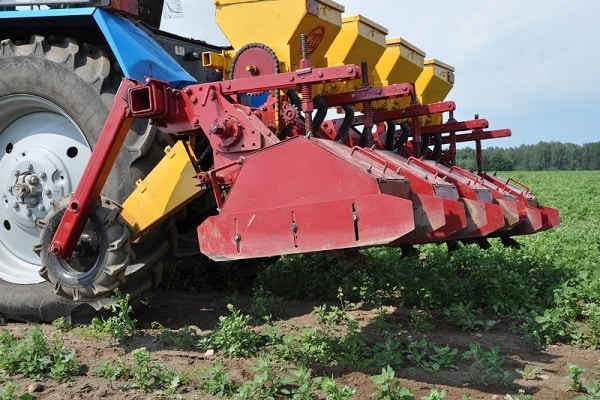
USMK-5.4
With this cultivator, inter-row loosening is carried out with the possibility of simultaneous fertilization. In one pass, the machine covers 30 rows of beets. UMSK-5.4 is also used for continuous pre-sowing soil cultivation. The width of coverage is 5.4 m, the depth of loosening with tines is from 4 to 14 cm. The cultivator is convenient because it can be folded up to 2.5 m when driving on roads.
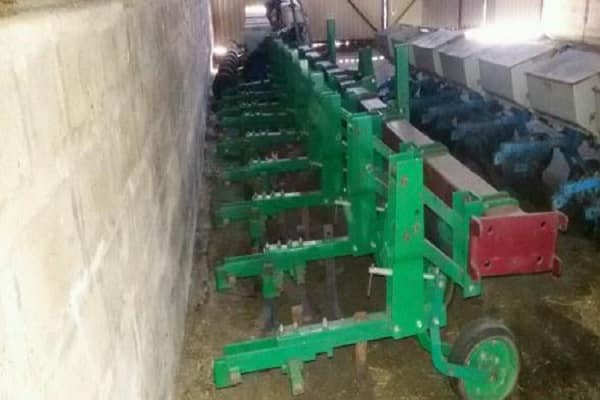
USMK-5.4 with feeding device
The tine cultivator of the manufacturer Techmash allows you to loosen the soil between the rows and at the same time apply fertilizers. It covers 30 rows of beets in one pass. It is used for continuous soil processing. Coverage - 5.4 m, loosening depth with tines from 4 to 14 cm.
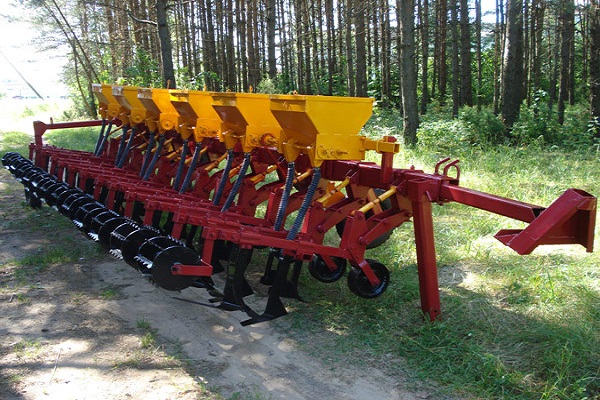
USMK-5.4 with AVPU-12
It is convenient to use, since it can be folded up when driving on roads up to a width of 2.5 m. The unit is equipped with a special device that allows you to apply herbicides to the soil. In one pass, it fertilizes 30 rows of beets with simultaneous inter-row soil cultivation. Also used for continuous seedbed preparation. In 1 pass it covers 5.4 m with a loosening depth of 4 to 14 cm.
A native of the Belarusian Techmash allows not only to cultivate the soil, but also to apply liquid fertilizing at the same time.

Cultivator mounted KRN-4.2
In 1 pass, it cultivates 8 rows of row crops, the distance between which is 60, 70 and 90 cm. Qualitatively loosens the soil, cuts weeds. Allows you to make simultaneous fertilizing with mineral fertilizers.
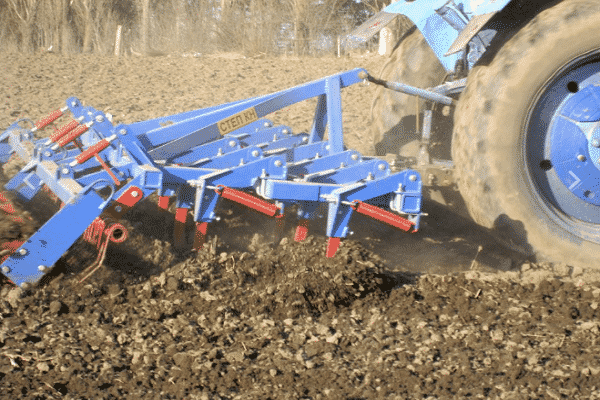
Cultivator mounted KRN-5.6
Capture width - 5.6 m. Has a depth adjustment. It is used for hilling, loosening, removing weeds, processing row spacings. Protective discs protect plants as much as possible during soil processing.
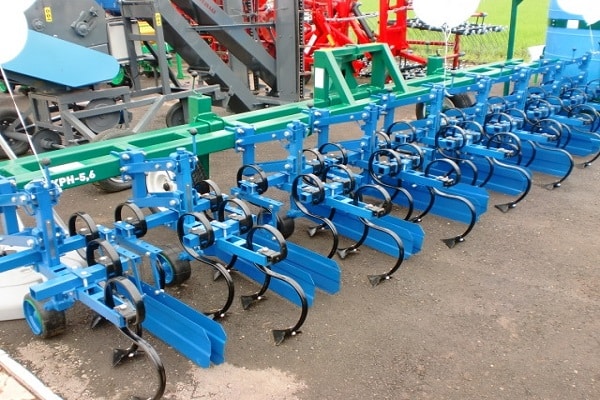
Mounted cultivator KMN-8.4
In one pass, it completely prepares the soil for sowing. Performs several functions at the same time:
- rolling of plowed soil;
- harrowing;
- cultivation.
It combes out weeds, cultivates to a depth of 3–10 cm, preserves moisture as much as possible and levels the soil. Reduces energy consumption by half.
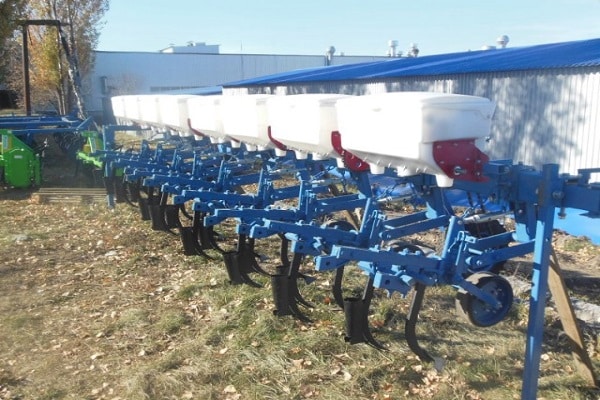
Inter-row tillage cutter
The tiller allows you to loosen the soil between rows in the fields. There are 3 types of cutters, which differ in coverage width: 60, 80 and 90 cm. The FM-3 cutter is most often used in agriculture.
Loosening of potato rows with a walk-behind tractor
To use a walk-behind tractor for loosening the soil, the potatoes are initially planted according to the appropriate parameters:
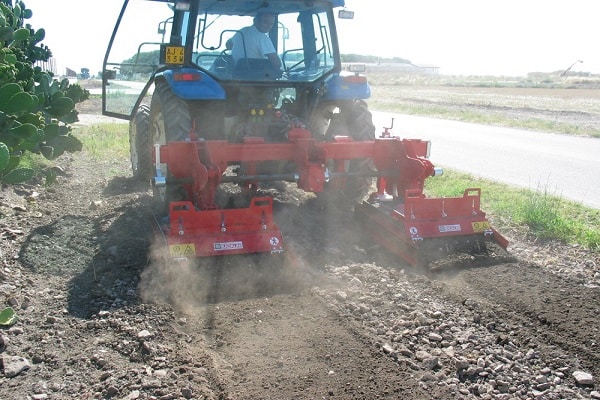
- distance between rows - 70 cm;
- the longest rows;
- there must be room at the edges for turning the machine.
Loosening is combined with the first hilling, it is carried out 15 days after planting the potatoes. To do this, use a hiller plow or disc nozzles. To make the walk-behind tractor better grip with the ground, it is recommended to replace ordinary wheels with metal wheels with grousers.
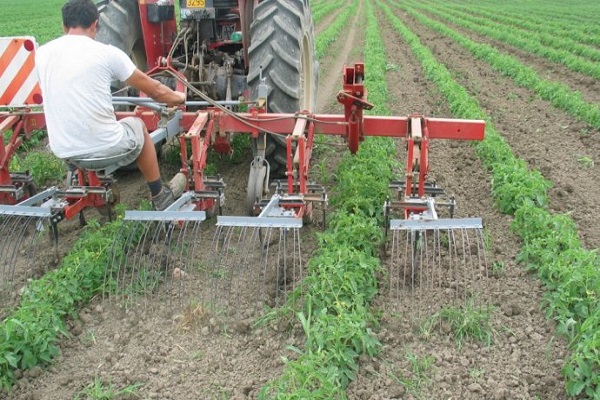
If loosening is done hiller, on a walk-behind tractor hang up a universal hitch by installing one or more hillow plows on it.
When using disc nozzles, it is necessary to adjust the angle of rotation and the distance between them. The distance can vary from 40 to 70 cm, it all depends on the variety of potatoes and the height of the bushes. The swing angle depends on the density of the soil.
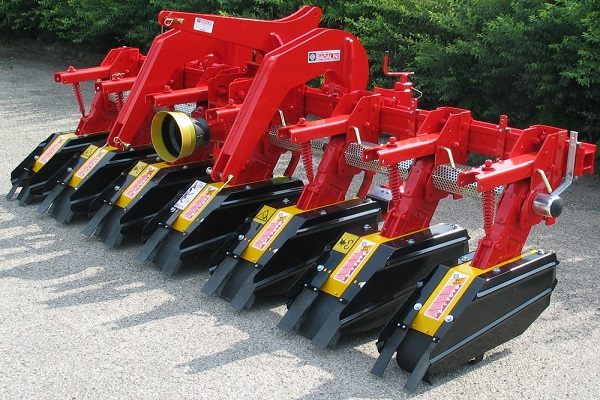
Homemade cultivator for processing
It is certainly easier to buy a cultivator for inter-row tillage. But not everyone has this opportunity. In this case, the device can be made by yourself. In principle, if you follow the instructions, then there is nothing difficult about it. The manufacturing process takes several stages:
- It is necessary to find 3 metal discs or rings with a diameter of 10, 20 and 30 cm. If you use rings, the design will be lighter.
- Pick up a pipe with a diameter of 25 mm. Place disks on it (from large to small) at a distance of 15 cm from each other.
- Then the spikes are welded. Usually metal rods are used for this. The unit will need about 40 spikes about 12 cm in length. The smaller disc has 5 thorns, the middle disc has 10, and the large disc has 15. The remaining ones are distributed over the pipe.
- With the help of abutments and bushings, the disks are fixed to the frame at an angle of 45 degrees.
- Wheels are mounted. A staple is made of a metal strip, the width of which is 7 cm and the thickness is 4 mm... To secure the guide wheels, holes are made in it. Two wheels are enough for the cultivator.
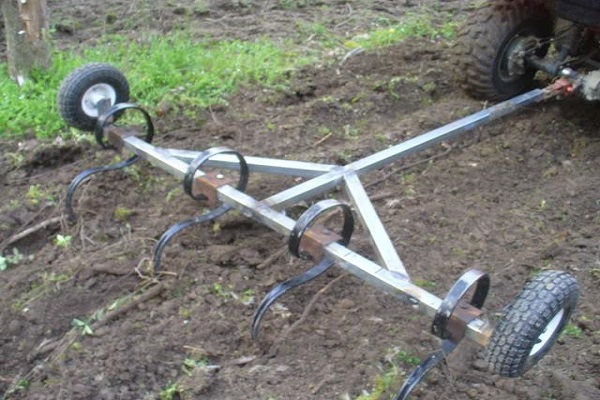
Weeding potato rows with a walk-behind tractor
Motoblock is a versatile tool. With its help, you can plow the soil, plant and huddle root crops, harvest and carry out weeding. There are 3 types of walk-behind tractor devices with which you can perform these functions.
Paws
The most popular device. The tines are easy to set up and use, but most importantly they clean the row spacing neatly. Paws can be one-sided and double-sided.The latter make it possible to weed potatoes from both sides simultaneously.

Propolnik
This is a frame made of iron, on which several knives are attached and a special drum is installed. The more knives, the better the weeding quality. The function of the blades is to cut the weeds. The drum, neatly hooking with its paws, throws them back.
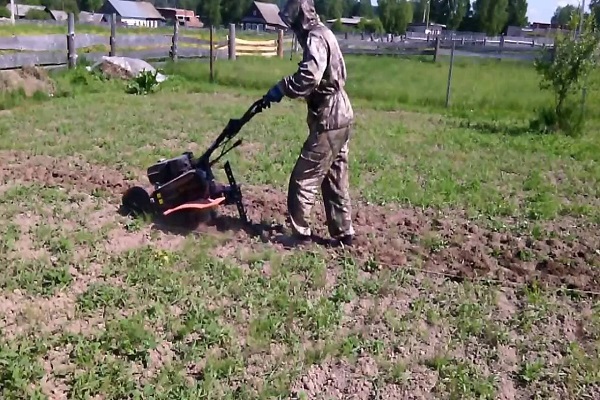
Hedgehog
This unit consists of circular blades with pins on the sides to remove weeds from the machine. Hedgehogs are of two types: conical and rotary. The former are used for weeds that have not yet emerged, the latter for plowing, weeding and hilling.
